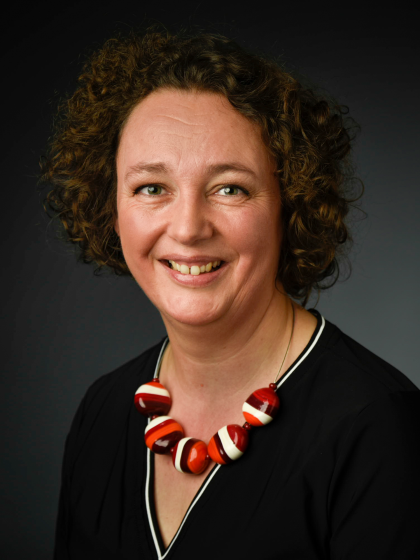prof. dr. H.G. (Rina) Knoeff

Histories of Healthy Ageing
As Western populations get older, medicine is increasingly dominated by lifestyle diseases that clinical approaches and localised pathology are unsuited to deal with. This project shows that questions of healthy living were a central part of pre-modern medicine, often discussed as the six non-naturals. These were airs and places, food and drink, exercise, excretion and retention, sleep, and emotions. Although advice on healthy living and ageing was long a key part of medical literature, its history has been remarkably neglected compared to diagnostics and therapeutics. The project Histories of Healthy Ageing seeks to correct this, examining the history of all the non-naturals and showing their striking relevance for today.
In the project I collaborate with medical doctors and specialists from the Healthy Ageing Team at the University Medical Center Groningen, the Aletta Jacobs School of Public Health as well as with policy makers of the City of Groningen. So far the project has resulted in the edited volume Lifestyle and Medicine in the Enlightenment: THe Six Non-Naturals in the Long Eighteenth Century (Routledge, 2020), the exhibition Gelukkig Gezond! Histories of Healthy Ageing (University Museum Groningen, June 2017 – January 2018), an accompanying popular scientific book under the same title, an international conference, and a masterclass on the history of eating. More information: www.historiesofhealthyageing.nl
Vital Matters. Boerhaave’s Chemico Medical Legacy and Dutch Enlightenment Culture
NWO Vidi project (2012-2017)
This project analyzes how Boerhaave’s chemistry became pivotal in eighteenth-century Dutch medicine. The import of the project, however, goes much further than writing a reception history of Boerhaave’s ideas. The different subprojects tie in with current historiographic concerns with the traditional divide between artisanal epistemology and practices on the one hand and academic (scientific) knowledge on the other as well as with ongoing discussions on materiality and objectivity. Moreover, with its emphasis on vital powers, the project aims at challenging the view that the Dutch Enlightenment body was rooted in the ‘Scientific Revolution’ mechanical natural philosophy. A focus on the history of chemistry for medicine allows the researchers to develop new perspectives on the histories of eighteenth-century chemistry for medicine and Enlightenment thought, with three concrete goals: (1) to illuminate the importance of manual and sensual engagement with nature for our understanding of eighteenth-century academic medicine; (2) to explore the various uses and changing meanings of (al)chemical materials and procedures in medicine and (3) to emphasize the importance of vital powers for eighteenth-century Dutch medicine and culture. Together the projects exemplify a new approach for studying the history of the Enlightenment body in relation to eighteenth-century Dutch culture.
So far the project has resulted in workshops, articles in academic journals and a PhD thesis on Fluid Bodies. Physiology and Chemistry in the Eighteenth-Century Boerhaave School (Verwaal, 2018). My own part of the research will be published as a monograph: The Dutch Boerhaavians and Elightenment Medicine of Body and Soul (Routledge).
Cultures of Collecting. The Leiden Anatomical Collections in Context
NWO Free Competition (2008-2012)
The general aim of the project was a description and analysis of anatomical collections from a humanities perspective. The project investigated how historical and cultural practices and concerns have shaped anatomical preparations and how exhibitions of the anatomical body have informed cultural imagery of the body. The programme consisted of three interrelated (art- and medical) historical projects investigating the cultural and academic embedding of the collections. Moreover, on a meta- level the synthesising project (3) analysed the fate of anatomical collections also in relation to public history. Anatomical collections are today increasingly viewed not only as a specialists’ affair but also as cultural heritage relevant to the public at large. This means that the anatomical past must be taken into consideration. It does not do to dismiss public interest in the anatomical body as mere ‘popularisation’ or ‘entertainment’, but it is necessary to develop new positions on the relationships between academic anatomy and public interest in the body. This will (a) importantly contribute to a better understanding of today’s tensions accompanying the public display of human remains and (b) help with the practical question of how to exhibit the anatomical past in today’s museum.
The project has resulted in two PhD dissertations (published with Brill and Ashgate), a silver medal of the Teyler’s Scientific Society for one of the dissertations, articles in academic journals and newspapers, an international conference resulting in The Fate of Anatomical Collections (Ashgate, 2015) and the Leiden Declaration on Human Anatomy / Anatomical Collections concerning the conservation & preservation of anatomical and pathological collections (2012), which was signed by historians, artists, museums and medical doctors & societies worldwide. The following article in Times Higher Education summarises the project: https://www.timeshighereducation.com/comment/from-where-i-sit/from-where-i-sit-remembrance-of-medicine-past/420434.article
